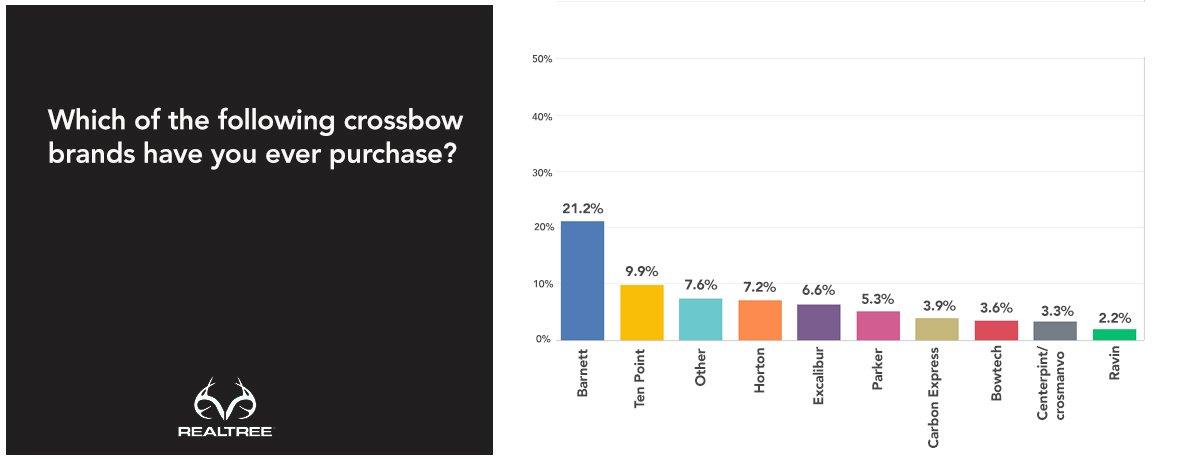When it comes to pure effectiveness, a modern crossbow and modern compound bow aren't even in the same class. Here's why.
I shot my first crossbow about 10 years ago. The bow was on loan from a buddy, and I'd intended to take it turkey hunting. A few shots on the range convinced me otherwise. Not only was the thing loud, heavy, and cumbersome as a tuba horn, it was wildly inaccurate. In fact, a tuba bell's diameter would've been a good way to reference my average 20-yard group size. Maybe not all crossbows of the day were that bad, but I've heard enough stories from enough hunters to know that many of them were.
The scene's different now. I've tested and reviewed 20 or more crossbows over the past year, both flagship and entry-level models, from every major crossbow manufacturer. The difference in any of today's crossbows and the crossbows of 10 years ago is simply astounding. In fact, I'd put crossbow technology in the same rapid advancement category as inline muzzleloaders and laser rangefinders.
Before you think I'm trying to again open the crossbow debate, I'm not. Well, not really. We've covered that already, several times, including here and here.
But I would like to reiterate what my friend and colleague Dave Hurteau at Field and Stream is saying in his post on Whitetail365. To this day, when the crossbow debate flares, some of the most frequently used arguments—both for and against expanded crossbow use—simply aren't true. They're talking points.
It could be that the people making these talking points are lying. I think it's more likely they haven't shot a crossbow in a while. A modern crossbow far outclasses a compound as the more effective hunting tool. Here's why:
- Power. Today's crossbows are all but universally more powerful than any of today's compounds. Finished crossbow bolts weigh around 400 grains on average, and some are quite a bit heavier. That's as heavy or heavier than the average compound shooter's hunting arrow. Most crossbows shoot those bolts at 350 fps plus. Several will push them to 375, and a few will easily break 400 fps. No shootable, mainstream compound is that fast with a finished hunting arrow. Heavier projectiles moving faster are more powerful at any range. Period. Physics don't lie.
- Consistency. Modern crossbows are also amazingly consistent. Of the 20 I've tested this year, I've only seen one that wouldn't put every arrow into a sub 1-inch group at 20 yards. With the help of a rangefinder and a decent rest (like my knee), it's as easy to shoot a fist-sized group at 70 or 80 yards with a good crossbow as it is with a good scoped .22 rifle. With a compound … well, it's not.
- Learning Curve. Finally, add a short learning curve to those power and accuracy capabilities. Anyone with a little rifle-shooting experience can pick up a sighted-in crossbow and legitimately kill a critter with it after a handful of practice shots. I've seen this time and again this turkey season. Back in early April, Stephanie Mallory and I joined Cally Morris during Nebraska's early archery season. Barnett sent a Recruit crossbow to camp for Stephanie to use. Thing is, she'd never seen or shot a Barnett Recruit before we arrived. No matter. She took maybe a dozen shots on the range, enough to dial in the red-dot sight, and then killed two turkeys with it the next day.
Last week, Hurteau and I shared another Nebraska turkey camp, this one organized by Cabela's. They provided us with a couple of their new Lancer crossbows for the hunt. I picked one of them up the first afternoon at camp and, with the help of my rangefinder, was drilling turkey-vital-sized bulleyes from 55 yards within about 10 minutes.
The turkeys were henned-up that week, but fanning them was working well. I shot my gobbler the first afternoon out at 48 yards, and would've confidently taken a shot 10 yards beyond that. That's a long poke for a shotgun and premium turkey load. Hurteau killed his bird at 30 yards the next morning. He was using a Cabela's-brand 3-blade mechanical crossbow broadhead, and the hole it left in that bird may as well have been made by a .223. That bird hit the ground and never twitched.
Any more, when it comes to compound vs. crossbow, there is no debate. The fairer competition would be to pit a crossbow against a muzzleloader. It won't beat a scoped inline with a 150-grain powder charge and jacketed hollowpoint bullet. But my old open-sighted percussion rifle with a patched round ball, the one I used to kill my first deer at about 70 yards?
Tough call on that.







